Research on Lane-Changing Decision Making and Planning of Autonomous Vehicles Based on GCN and Multi-Segment Polynomial Curve Optimization
Abstract
1. Introduction
- (1)
- Taking position, speed, and acceleration information as input, the GCN model of the driving environment is constructed, and then a vehicle decision-making method is proposed that comprehensively considers the interaction between autonomous vehicle and driving environment information, and better reflects the influence of other vehicle information on lane change decisions of the autonomous vehicle.
- (2)
- A method for dynamically constructing convex polygon drivable areas is proposed based on the information of the ego vehicle and surrounding vehicles’ positions, velocities, and accelerations. This provides collision-free optimization space for subsequent trajectory planning, improving planning efficiency.
- (3)
- An optimization-based multi-segment polynomial curve trajectory planning method is introduced. It divides a complete trajectory into equally timed segments of polynomial curves, each with different optimization objective functions. This targeted optimization of motion parameters for each segment enhances the tracking accuracy of the trajectory planning algorithm.
- (4)
- Through simulation and on-road vehicle experiments, the feasibility of the proposed method is verified, and the performance is good, being superior to the existing decision-making and planning methods.
2. Related Works
2.1. Autonomous Vehicle Decision-Making Method
2.2. Autonomous Vehicle Trajectory Planning Method
2.3. Problems
3. Decision Making Based on GCN
3.1. Construction of Graph-Structured Data in Dynamic Interactive Driving Scenes
3.2. Dataset Construction and Network Details
4. Construction of Drivable Area
5. Trajectory Planning of Multi-Segment Polynomial Curve Based on Optimization
5.1. Construction of Polynomial Equation of Trajectory Curve
5.2. Parameter Optimization of Polynomial Trajectory Curve
5.2.1. Cost Function
5.2.2. Constraints
- (1)
- Continuity constraint
- (2)
- Security constraint
6. Simulation and On-Road Vehicle Experiments
6.1. Simulation Experiment
6.2. On-Road Vehicle Experiments
7. Conclusions
Author Contributions
Funding
Institutional Review Board Statement
Informed Consent Statement
Data Availability Statement
Conflicts of Interest
References
- Yurtsever, E.; Lambert, J.; Carballo, A.; Takeda, K. A Survey of Autonomous Driving: Common Practices and Emerging Technologies. IEEE Access 2020, 8, 58443–58469. [Google Scholar] [CrossRef]
- Ji, J.; Huang, Y.J.; Li, Y.W.; Wu, F. Decision-making analysis of vehicle autonomous driving behaviors for autonomous vehi-cles based on finite state machine. Automot. Technol. 2018, 12, 1–7. [Google Scholar] [CrossRef]
- Xia, X.T.; Pei, X.F.; Yu, J. Behavior planning and control of intelligence commercial vehicle based on finite state machine. In Proceedings of the Annual Meeting of the Chinese Society of Automotive Engineering, Shanghai, China, 19–21 October 2021; pp. 76–82. [Google Scholar] [CrossRef]
- Yu, H.; Tseng, H.E.; Langari, R. A human-like game theory-based controller for automatic lane changing. Transp. Res. Part C Emerg. Technol. 2018, 88, 140–158. [Google Scholar] [CrossRef]
- Yoo, J.H.; Langari, R. Stackelberg Game Based Model of Highway Driving. In Proceedings of the Asme Dynamic Systems & Control Conference Joint with the Jsme Motion & Vibration Conference, Fort Lauderdale, FL, USA, 17–19 October 2012. [Google Scholar] [CrossRef]
- Wei, C.; He, Y.; Tian, H.; Lv, Y. Game Theoretic Merging Behavior Control for Autonomous Vehicle at Highway On-Ramp. IEEE Trans. Intell. Transp. Syst. 2022, 23, 21127–21136. [Google Scholar] [CrossRef]
- Zhang, J.; Liao, Y.; Wang, S.; Han, J. Study on Driving Decision-Making Mechanism of Autonomous Vehicle Based on an Optimized Support Vector Machine Regression. Appl. Sci. 2017, 8, 13. [Google Scholar] [CrossRef]
- Huang, G.-B.; Zhu, Q.-Y.; Siew, C.-K. Extreme learning machine: Theory and applications. Neurocomputing 2006, 70, 489–501. [Google Scholar] [CrossRef]
- Peters, M.; Ketter, W.; Saar-Tsechansky, M.; Collins, J. A reinforcement learning approach to autonomous decision-making in smart electricity markets. Mach. Learn. 2013, 92, 5–39. [Google Scholar] [CrossRef]
- Costilla-Reyes, O.; Scully, P.; Ozanyan, K.B. Deep Neural Networks for Learning Spatio-Temporal Features from Tomography Sensors. IEEE Trans. Ind. Electron. 2017, 65, 645–653. [Google Scholar] [CrossRef]
- Li, L.; Ota, K.; Dong, M. Humanlike Driving: Empirical Decision-Making System for Autonomous Vehicles. IEEE Trans. Veh. Technol. 2018, 67, 6814–6823. [Google Scholar] [CrossRef]
- Liu, Y.; Wang, X.; Li, L.; Cheng, S.; Chen, Z. A Novel Lane Change Decision-Making Model of Autonomous Vehicle Based on Support Vector Machine. IEEE Access 2019, 7, 26543–26550. [Google Scholar] [CrossRef]
- Xu, X.; Zuo, L.; Li, X.; Qian, L.; Ren, J.; Sun, Z. A Reinforcement Learning Approach to Autonomous Decision Making of Intelligent Vehicles on Highways. IEEE Trans. Syst. Man Cybern. Syst. 2018, 50, 3887–3897. [Google Scholar] [CrossRef]
- Dong, Q.; Jiang, T.; Xu, T.; Liu, Y. Graph-based Planning-informed Trajectory Prediction for Autonomous Driving. In Proceedings of the 2022 6th CAA International Conference on Vehicular Control and Intelligence (CVCI), Nanjing, China, 28–30 October 2022; pp. 1–6. [Google Scholar] [CrossRef]
- Gao, X.; Luan, T.; Li, X.; Liu, Q.; Li, Z.; Yang, F. Multi-Vehicles Decision-Making in Interactive Highway Exit: A Graph Rein-forcement Learning Approach. In Proceedings of the 2022 IEEE 17th Conference on Industrial Electronics and Applications (ICIEA), Chengdu, China, 16–19 December 2022; pp. 534–539. [Google Scholar] [CrossRef]
- Zhang, Y.; Li, J.; Chen, J.; Liu, Z.; Chen, Z. A GCN-Based Decision-Making Network for Autonomous UAV Landing. In Proceedings of the 2020 5th International Conference on Advanced Robotics and Mechatronics (ICARM), Shenzhen, China, 18–21 December 2020; pp. 652–657. [Google Scholar] [CrossRef]
- Zhang, Y.; Li, J.; Chen, J.; Liu, Z.; Chen, Z. A Practical Approach to Robotic Design for the DARPA Urban Challenge; Springer: Berlin/Heidelberg, Germany, 2009. [Google Scholar] [CrossRef]
- Luo, M.; Hou, X.; Yang, J. Surface Optimal Path Planning Using an Extended Dijkstra Algorithm. IEEE Access 2020, 8, 147827–147838. [Google Scholar] [CrossRef]
- Shang, E.; Dai, B.; Nie, Y.; Zhu, Q.; Xiao, L.; Zhao, D. A Guide-line and Key-point based A-star Path Planning Algorithm for Autonomous Land Vehicles. In Proceedings of the 2020 IEEE 23rd International Conference on Intelligent Transportation Systems (ITSC), Rhodes, Greece, 20–23 September 2020. [Google Scholar] [CrossRef]
- Erke, S.; Bin, D.; Yiming, N.; Qi, Z.; Liang, X.; Dawei, Z. An improved A-Star based path planning algorithm for autonomous land vehicles. Int. J. Adv. Robot. Syst. 2020, 17, C591–C617. [Google Scholar] [CrossRef]
- Yuan, C.R.; Liu, G.F.; Zhang, W.Q.; Pan, X.L. An efficient RRT cache method in dynamic environments for path planning. Robot. Auton. Syst. 2020, 131, 103595. [Google Scholar] [CrossRef]
- Cao, K.; Cheng, Q.; Gao, S.; Chen, Y.; Chen, C. Improved PRM for Path Planning in Narrow Passages. In Proceedings of the 2019 IEEE International Conference on Mechatronics and Automation (ICMA), Tianjin, China, 4–7 August 2019. [Google Scholar] [CrossRef]
- Arab, A.; Yu, K.; Yi, J.; Song, D. Motion planning for aggressive autonomous vehicle maneuvers//Conference on Automation Science and Engineering. In Proceedings of the 2016 IEEE International Conference on Automation Science and Engineering (CASE), Fort Worth, TX, USA, 21–25 August 2016. [Google Scholar] [CrossRef]
- Noreen, I.; Khan, A.; Ryu, H.; Doh, N.L.; Habib, Z. Optimal path planning in cluttered environment using RRT*-AB. Intell. Serv. Robot. 2018, 11, 41–52. [Google Scholar] [CrossRef]
- Miller, C.; Pek, C.; Althoff, M. Efficient Mixed-Integer Programming for Longitudinal and Lateral Motion Planning of Autonomous Vehicles. In Proceedings of the 2018 IEEE Intelligent Vehicles Symposium (IV), Changshu, China, 26–30 June 2018. [Google Scholar] [CrossRef]
- Gutjahr, B.; Groll, L.; Werling, M. Lateral Vehicle Trajectory Optimization Using Constrained Linear Time-Varying MPC. IEEE Trans. Intell. Transp. Syst. 2016, 18, 1586–1595. [Google Scholar] [CrossRef]
- Zips, P.; Bock, M.; Kugi, A. A fast motion planning algorithm for car parking based on static optimization. In Proceedings of the 2013 IEEE/RSJ International Conference on Intelligent Robots and Systems, Tokyo, Japan, 3–7 November 2013. [Google Scholar] [CrossRef]
- Zips, P.; Bock, M.; Kugi, A. Optimization based path planning for car parking in narrow environments. Robot. Auton. Syst. 2016, 79, 1–11. [Google Scholar] [CrossRef]
- Yan, Y.; Peng, L.; Wang, J.; Zhang, H.; Shen, T.; Yin, G. A Hierarchical Motion Planning System for Driving in Changing Environments: Framework, Algorithms, and Verifications. IEEE/ASME Trans. Mechatron. 2023, 28, 1303–1314. [Google Scholar] [CrossRef]
- Lim, W.; Lee, S.; Sunwoo, M.; Jo, K. Hierarchical Trajectory Planning of an Autonomous Car Based on the Integration of a Sampling and an Optimization Method. IEEE Trans. Intell. Transp. Syst. 2018, 19, 613–626. [Google Scholar] [CrossRef]
- Bojarski, M.; Del Testa, D.; Dworakowski, D.; Firner, B.; Flepp, B.; Goyal, P.; Jackel, L.D.; Monfort, M.; Muller, U.; Zhang, J. End to End Learning for Self-Driving Cars. arXiv 2016, arXiv:1604.07316. [Google Scholar] [CrossRef]
- Dosovitskiy, A.; Ros, G.; Codevilla, F.; Lopez, A.; Koltun, V. CARLA: An Open Urban Driving Simulator. arXiv 2017, arXiv:1711.03938. [Google Scholar] [CrossRef]
- Kingma, D.P.; Ba, J. Adam: A method for stochastic optimization. arXiv 2014, arXiv:1412.6980. [Google Scholar] [CrossRef]
- Stellato, B.; Banjac, G.; Goulart, P.; Bemporad, A.; Boyd, S. OSQP: An Operator Splitting Solver for Quadratic Programs. Math. Program. Comput. 2020, 12, 637–672. [Google Scholar] [CrossRef]
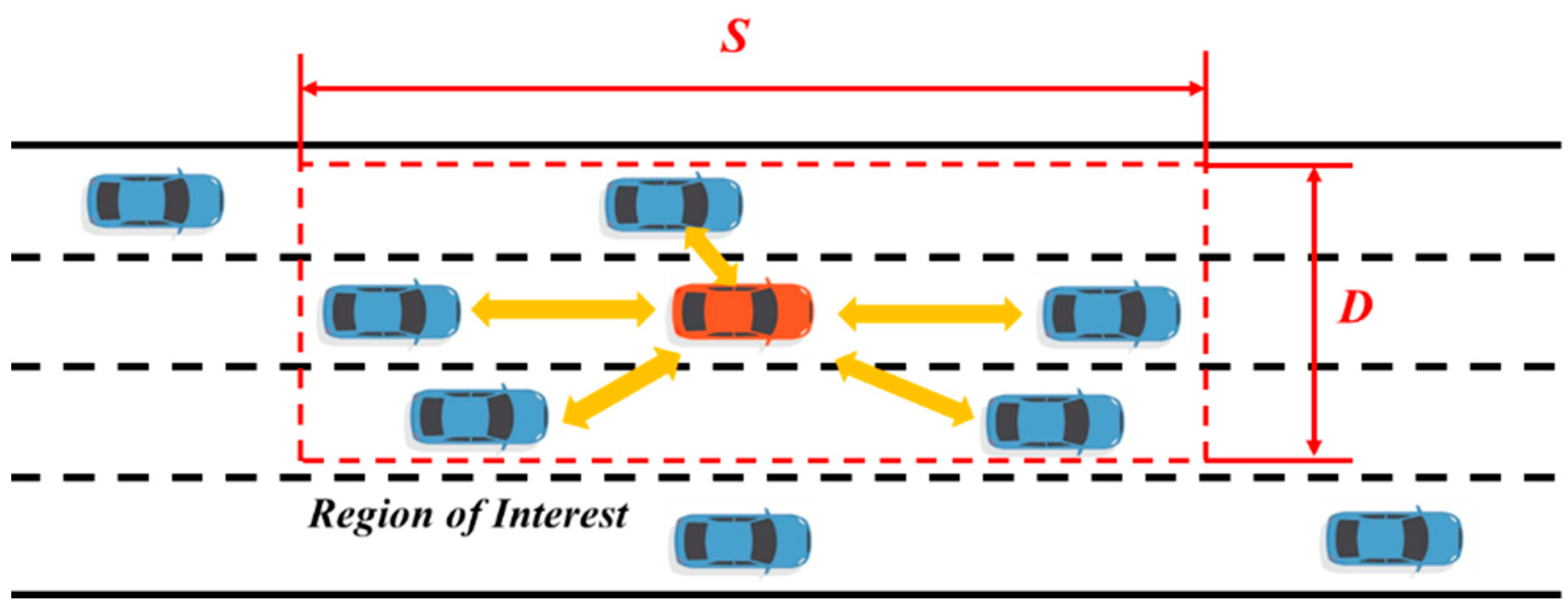
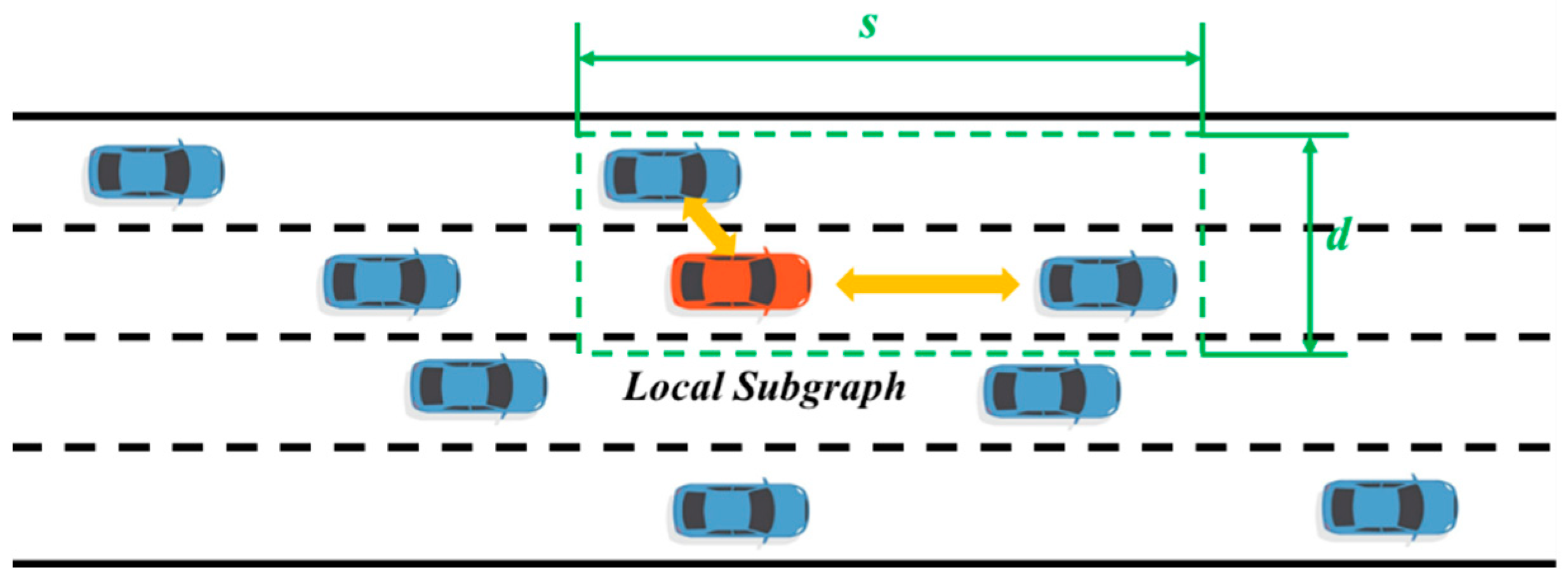
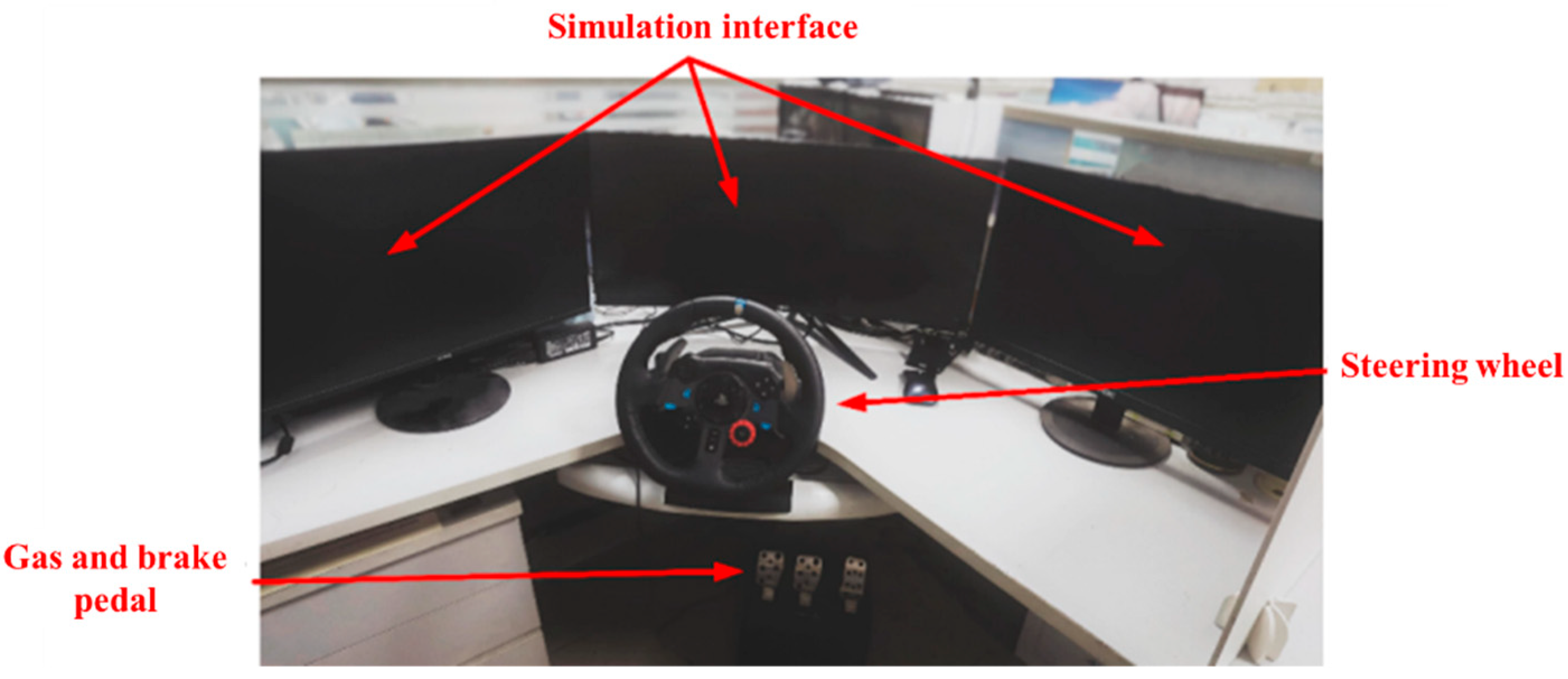
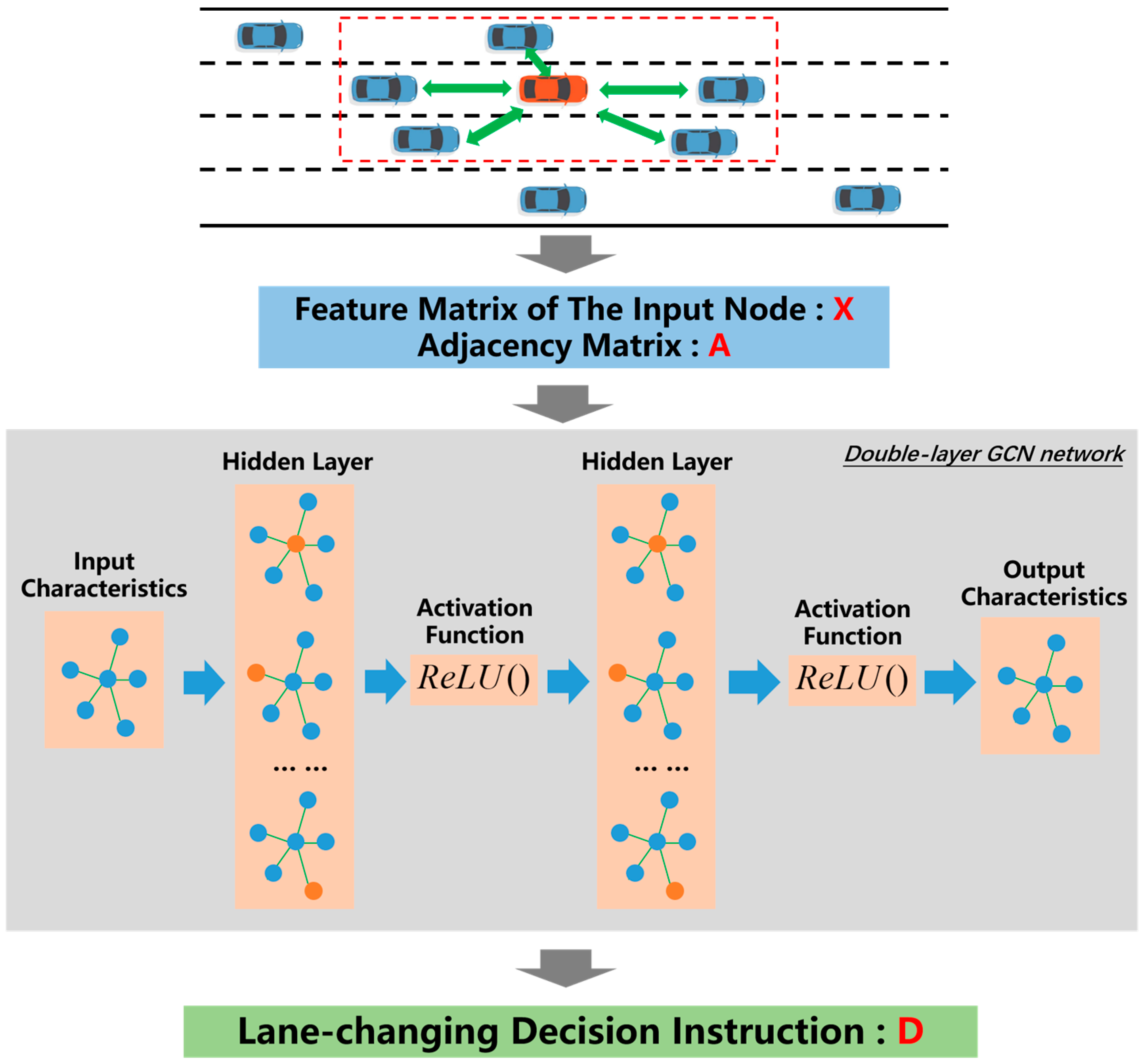

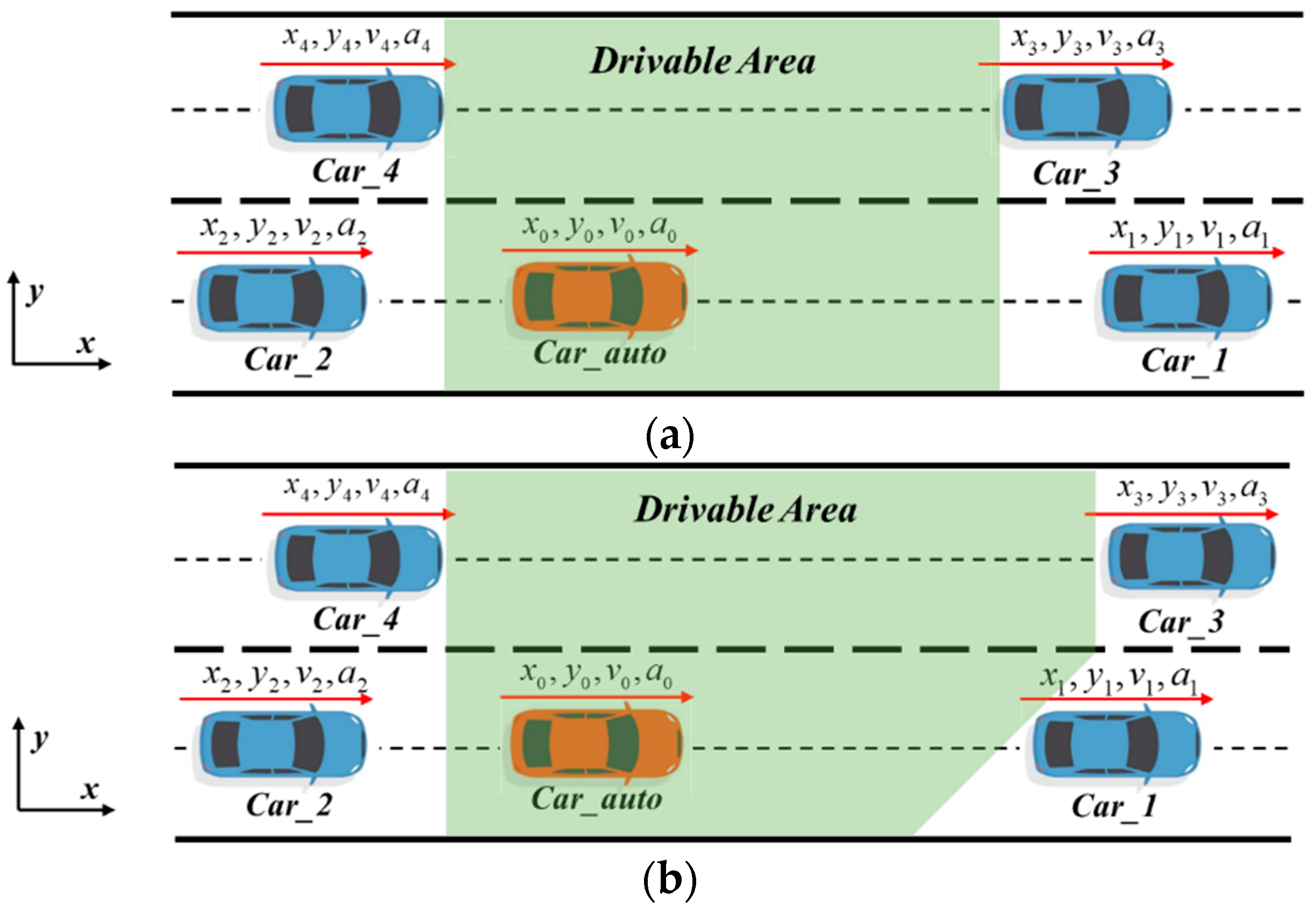
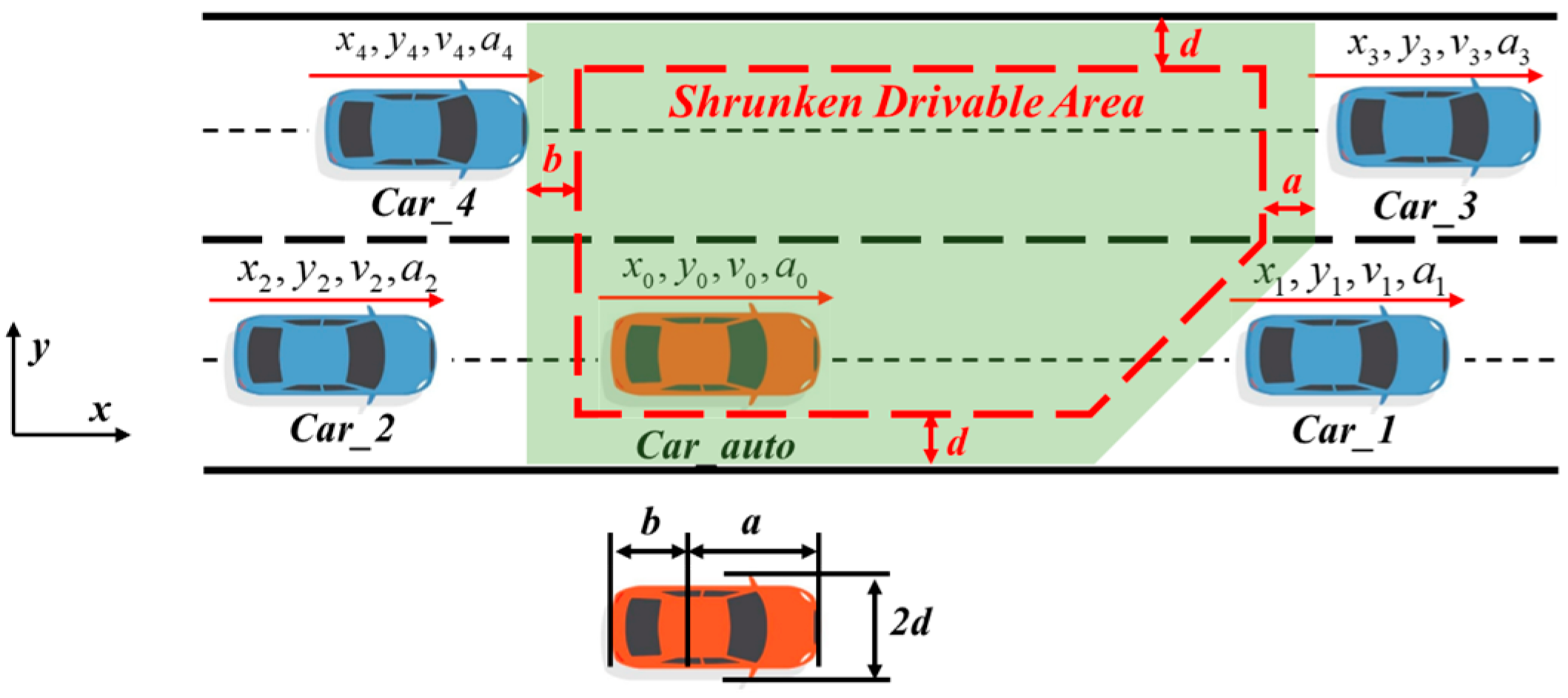

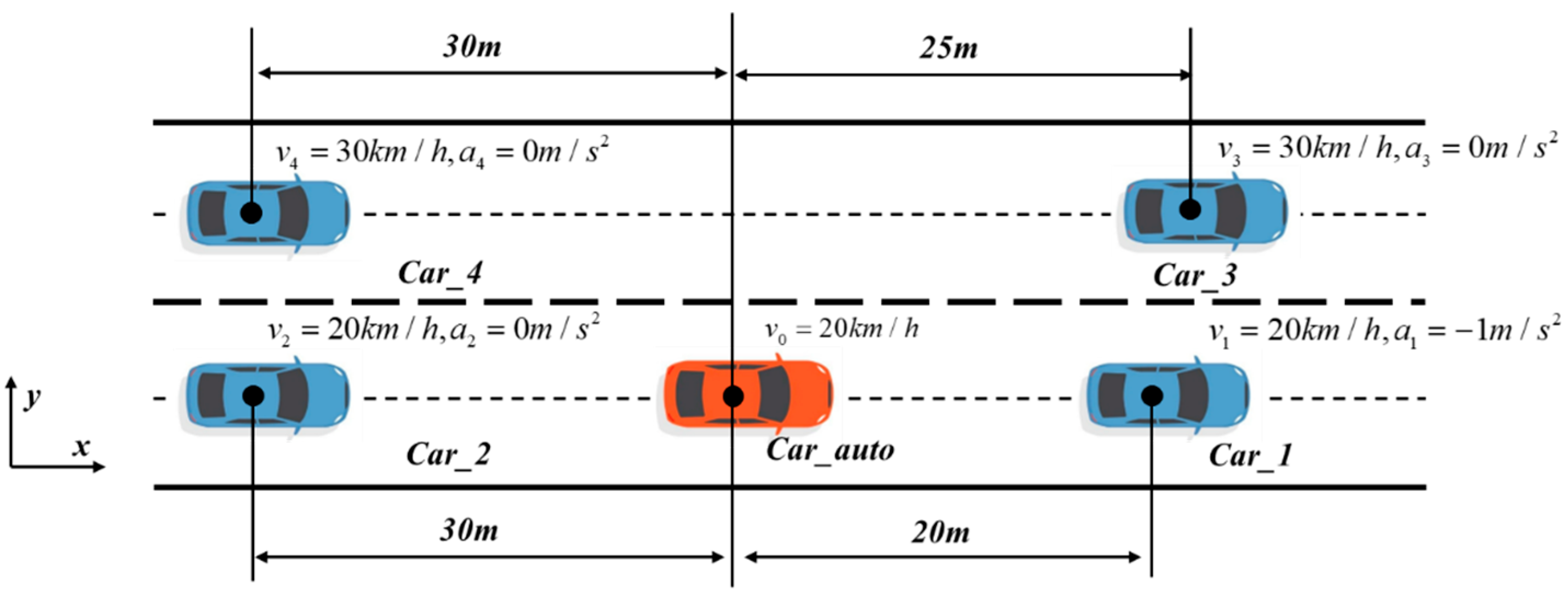
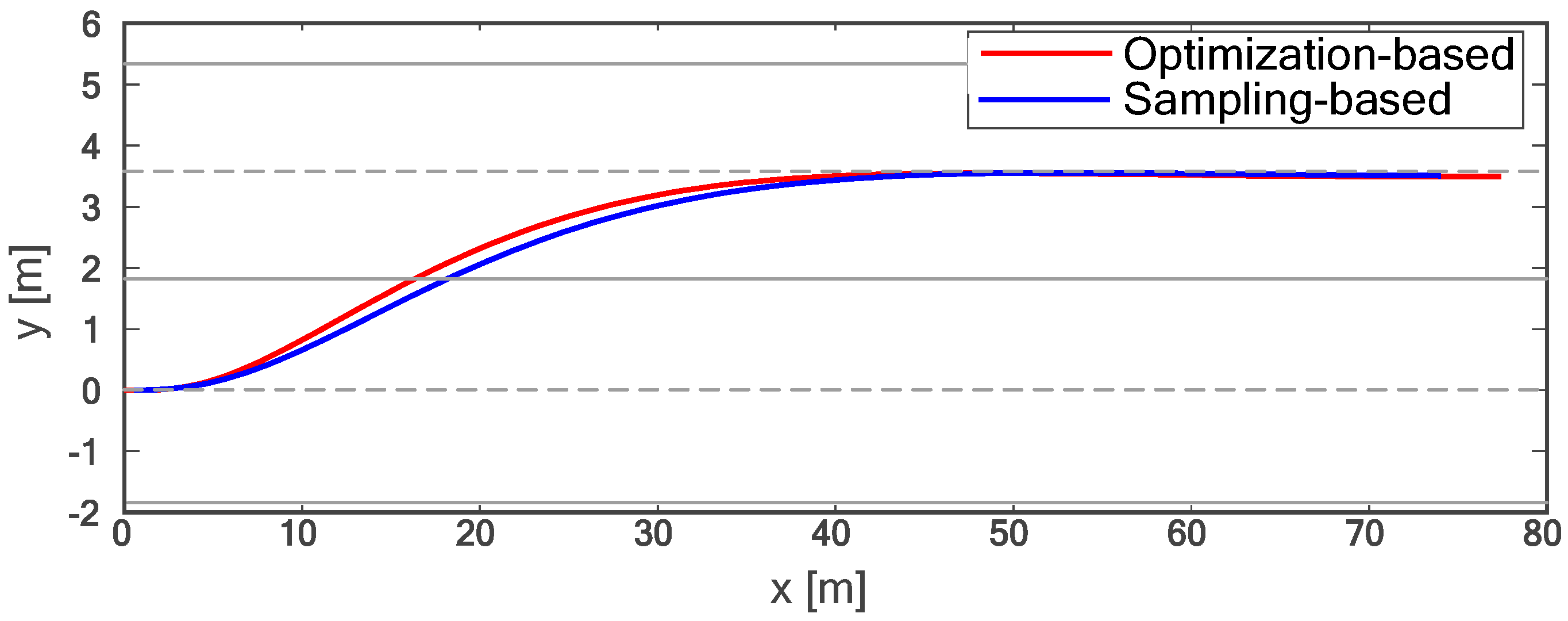
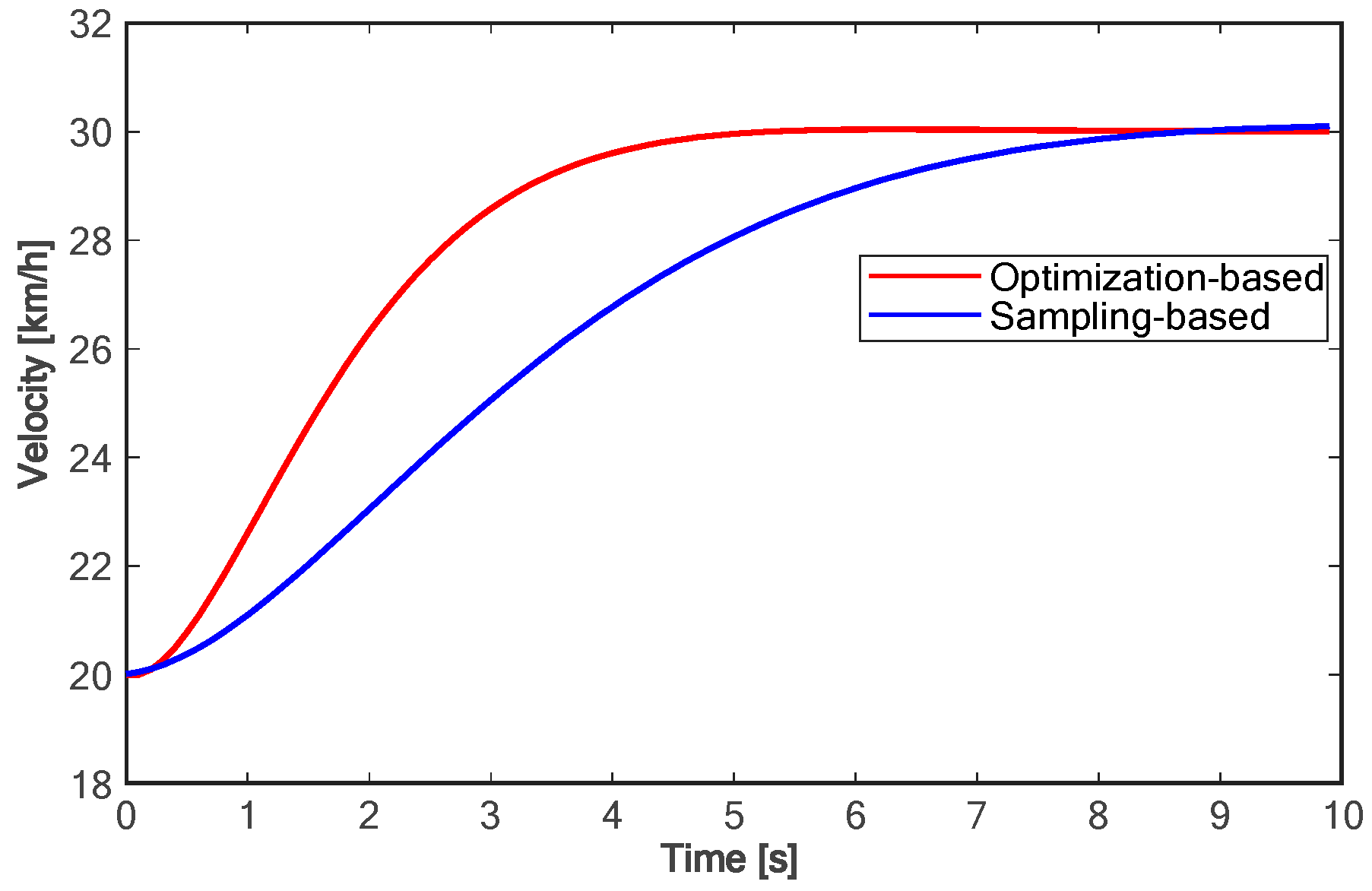
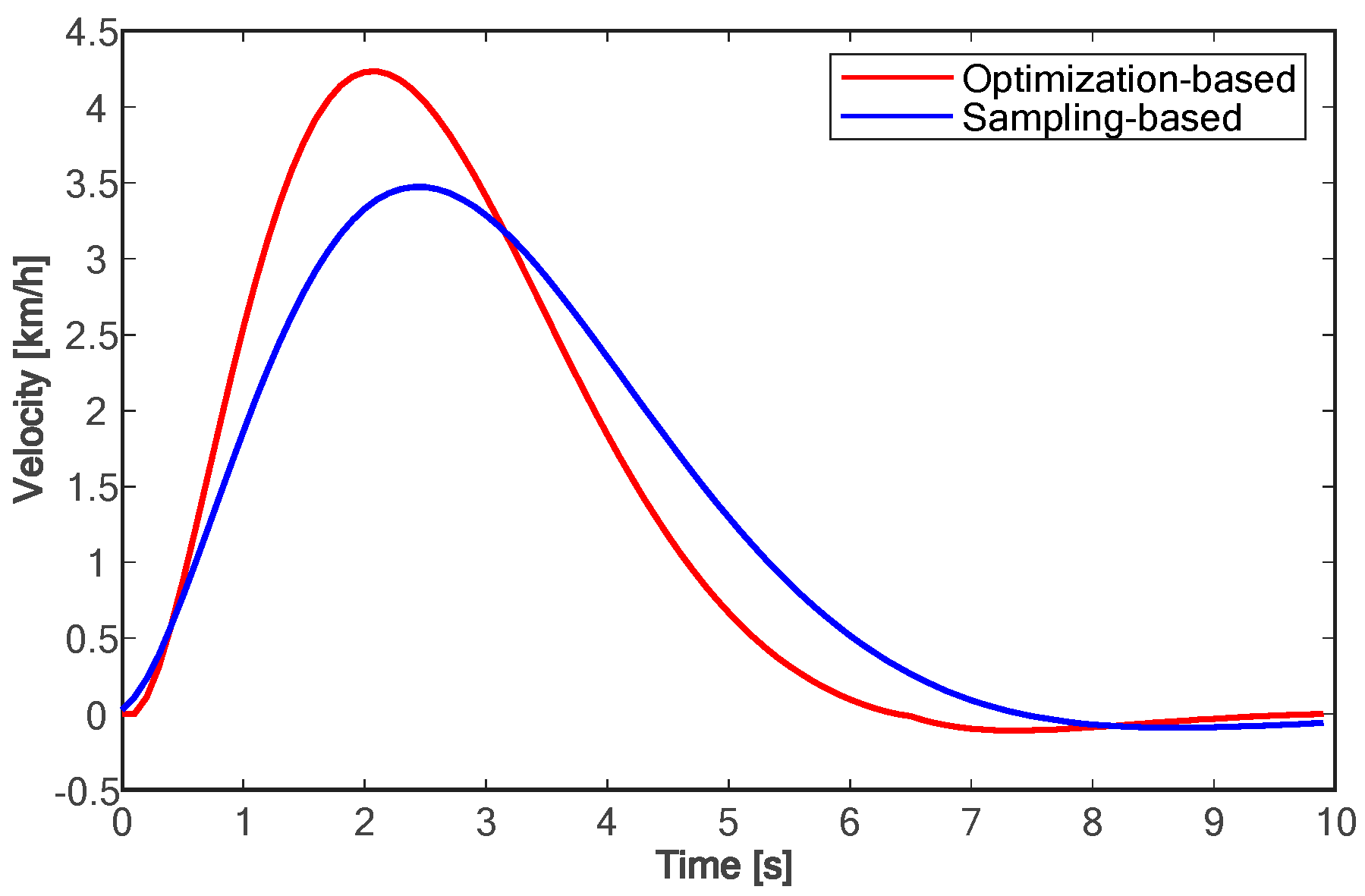

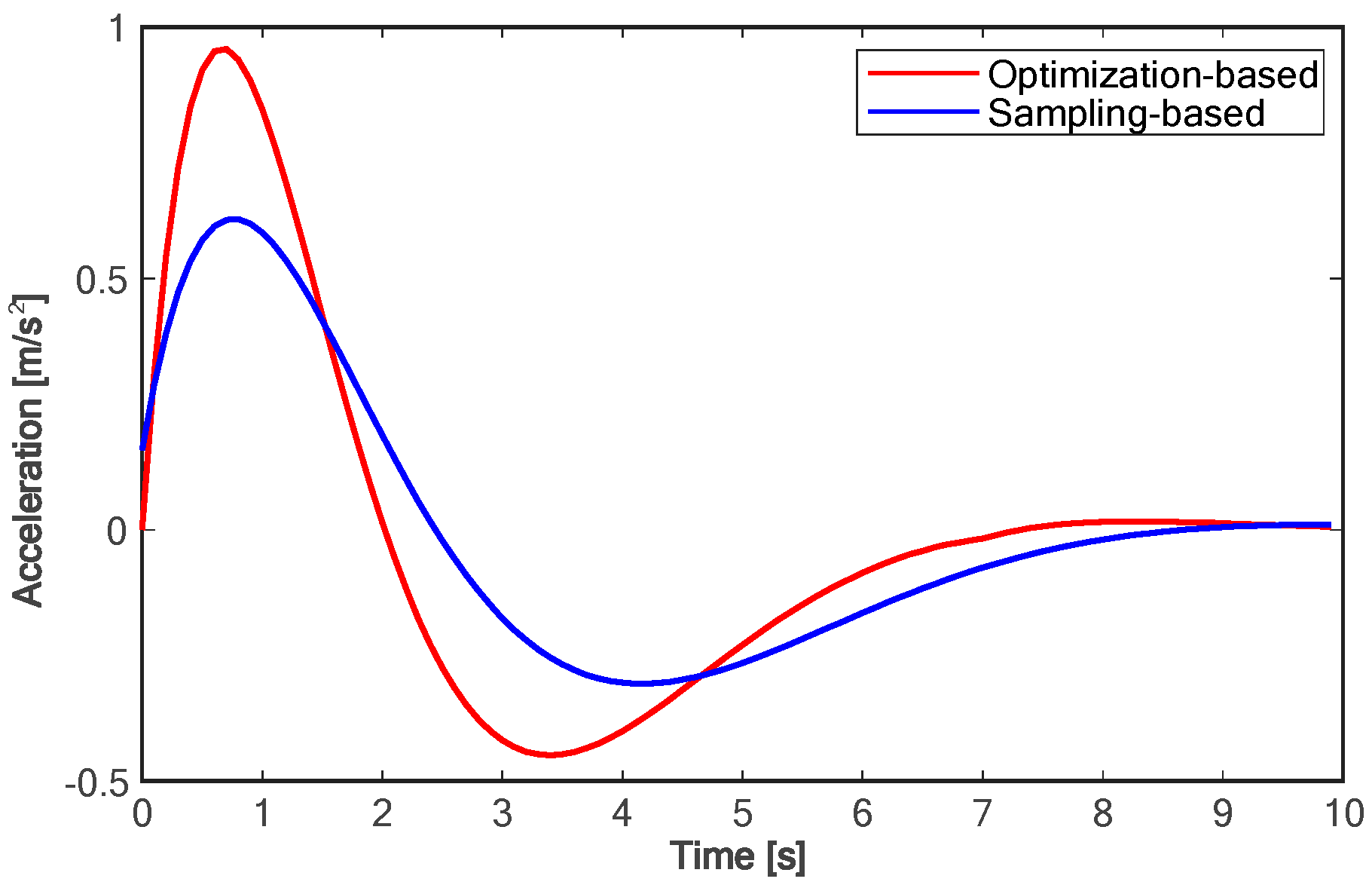

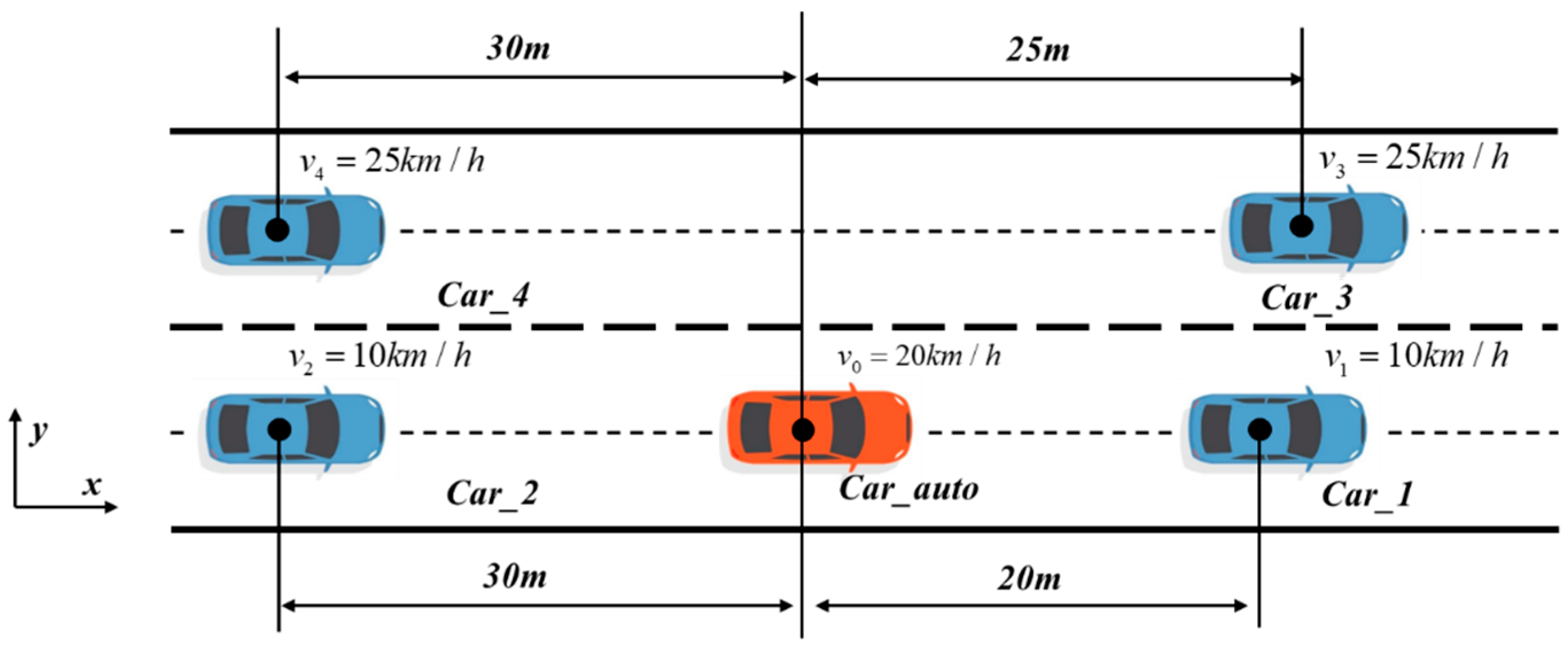
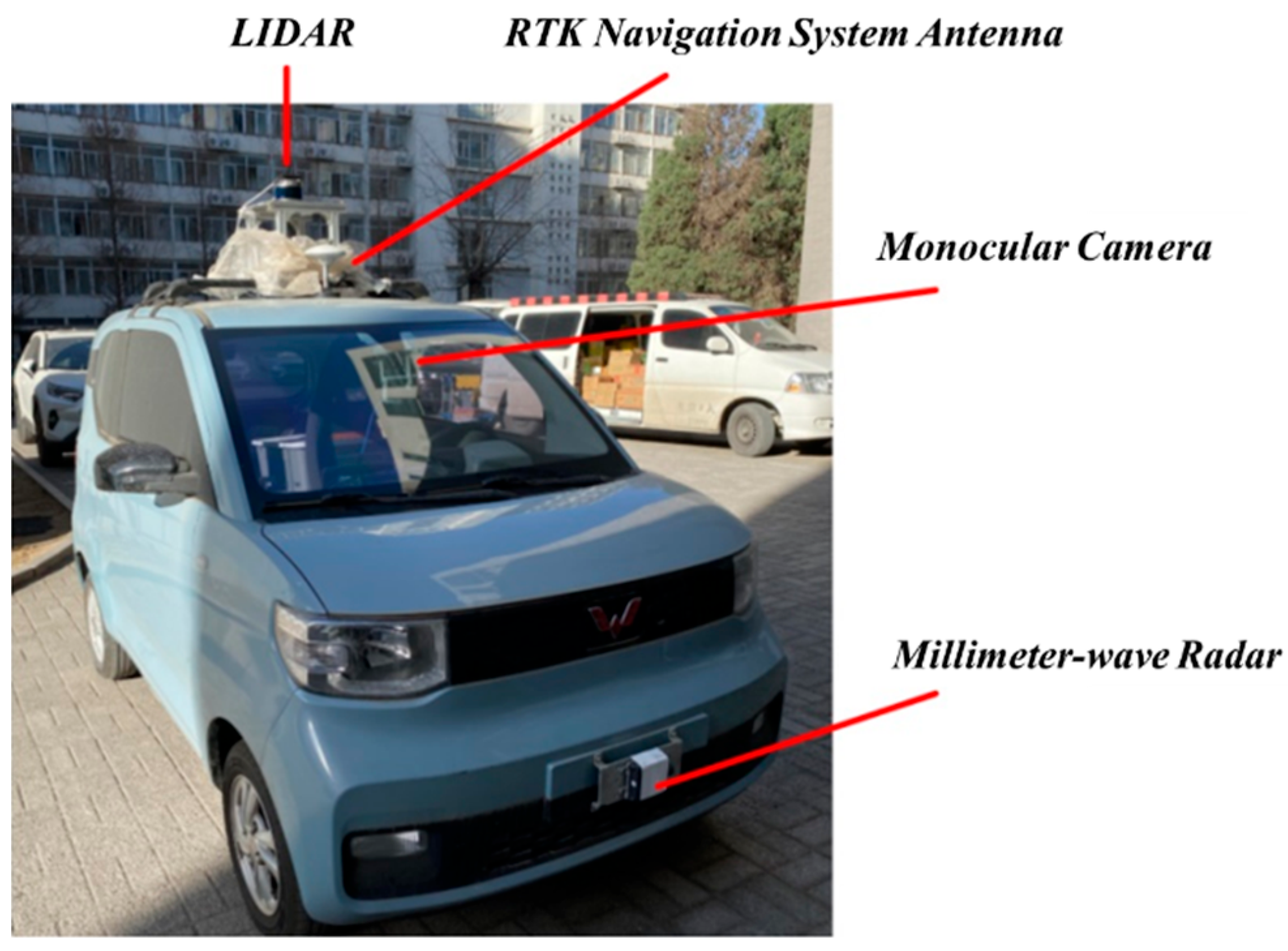
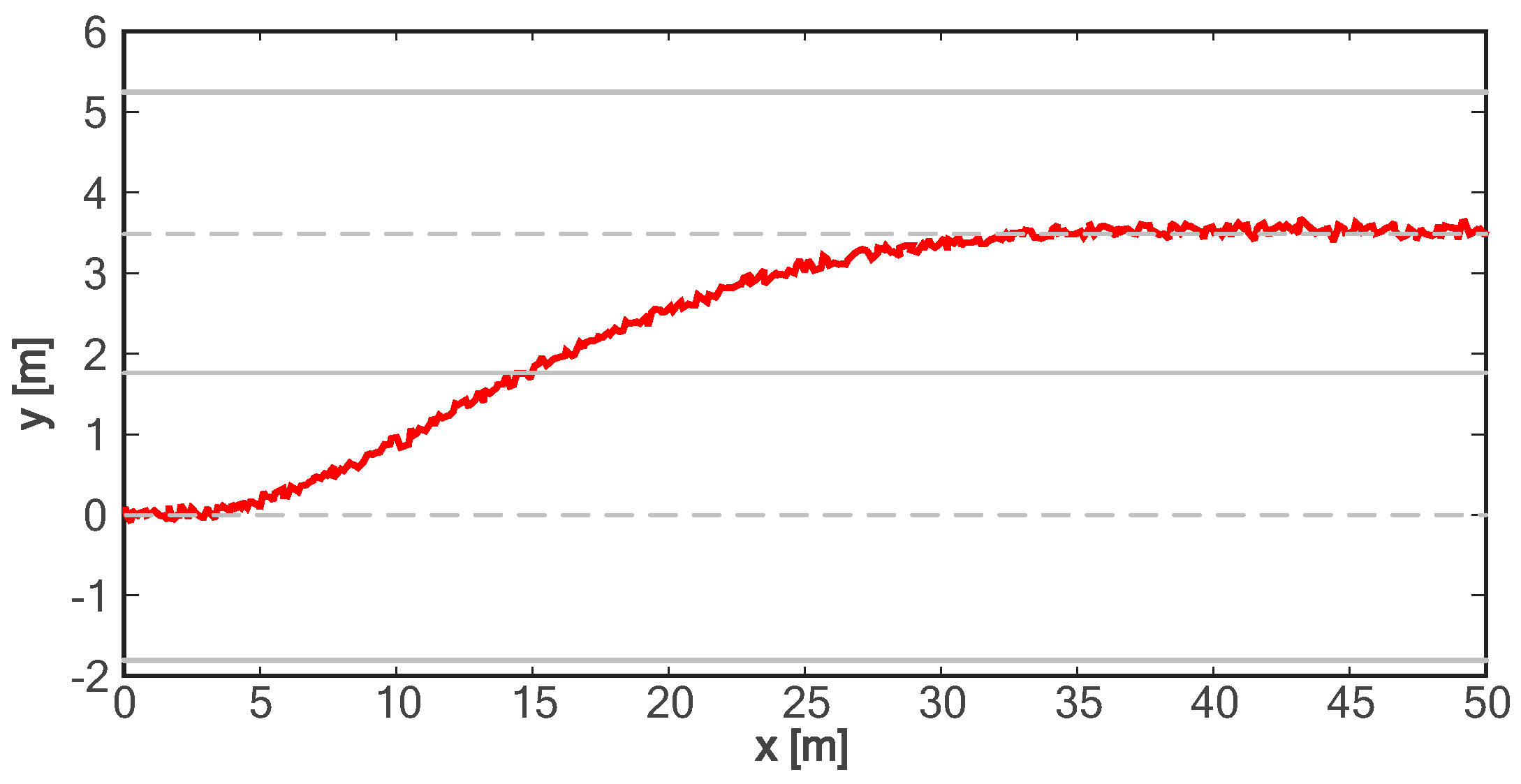


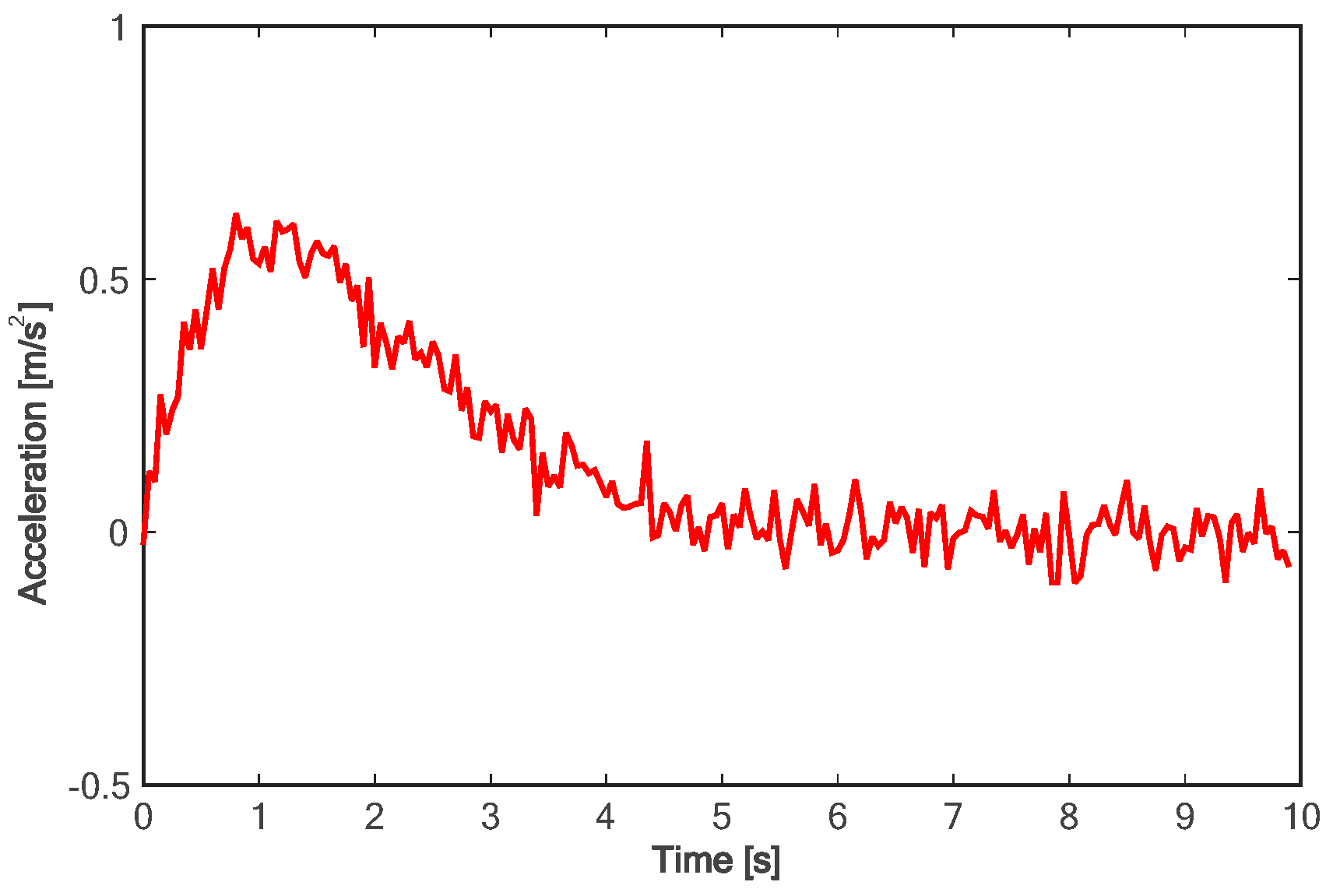
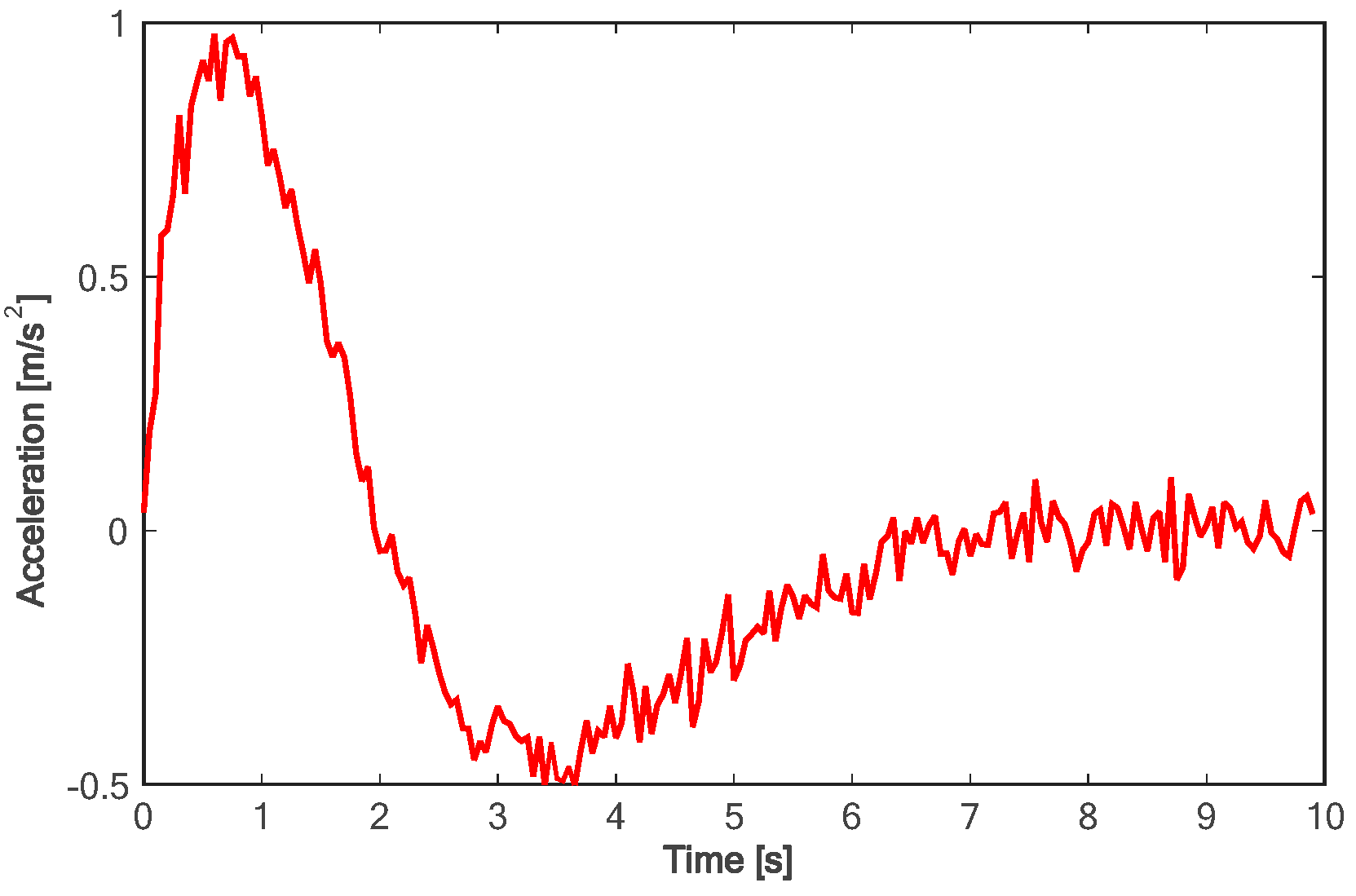
| Optimizer | Adam |
| Initial learning rate | 0.001 |
| Attenuation rate | 0.98 |
| Activation function | |
| Output function | |
| Loss function |
| Parameter Name | Sampling-Based | Optimization-Based | Variation |
|---|---|---|---|
| Duration of lane change (Total) | 7.1 s | 5.5 s | ↓23% |
| Duration to Achieve Longitudinal Target Velocity | 6.9 s | 4.1 s | ↓41% |
| Duration to Achieve Lateral Target Velocity | 2.7 s | 2.2 s | ↓19% |
| Range of Longitudinal Acceleration Variation | 0~0.5756 m/s2 | 0~1.1208 m/s2 | ↑95% |
| Range of Lateral Acceleration Variation | −0.3062~0.6181 m/s2 | −0.4485~0.9565 m/s2 | ↑63% |
| Average Time Cost | 0.058 s | 0.014 s | ↓76% |
| GW-NAV100B MEMS Inertial/Satellite Integrated Navigation System | |
|---|---|
| RTK accuracy (RMS) | Horizontal: 1.5 cm + 1 ppm; Vertical: 1.5 cm + 1 ppm |
| Orientation accuracy (RMS) | 0.2°/m |
| Velocity accuracy (RMS) | 0.03 m/s |
| Accelerometer zero bias stability | <0.2 mg |
| Accelerometer zero bias repeatability | <0.2 mg |
| Data update frequency | 20 Hz |
Disclaimer/Publisher’s Note: The statements, opinions and data contained in all publications are solely those of the individual author(s) and contributor(s) and not of MDPI and/or the editor(s). MDPI and/or the editor(s) disclaim responsibility for any injury to people or property resulting from any ideas, methods, instructions or products referred to in the content. |
© 2024 by the authors. Licensee MDPI, Basel, Switzerland. This article is an open access article distributed under the terms and conditions of the Creative Commons Attribution (CC BY) license (https://creativecommons.org/licenses/by/4.0/).
Share and Cite
Feng, F.; Wei, C.; Zhao, B.; Lv, Y.; He, Y. Research on Lane-Changing Decision Making and Planning of Autonomous Vehicles Based on GCN and Multi-Segment Polynomial Curve Optimization. Sensors 2024, 24, 1439. https://doi.org/10.3390/s24051439
Feng F, Wei C, Zhao B, Lv Y, He Y. Research on Lane-Changing Decision Making and Planning of Autonomous Vehicles Based on GCN and Multi-Segment Polynomial Curve Optimization. Sensors. 2024; 24(5):1439. https://doi.org/10.3390/s24051439
Chicago/Turabian StyleFeng, Fuyong, Chao Wei, Botong Zhao, Yanzhi Lv, and Yuanhao He. 2024. "Research on Lane-Changing Decision Making and Planning of Autonomous Vehicles Based on GCN and Multi-Segment Polynomial Curve Optimization" Sensors 24, no. 5: 1439. https://doi.org/10.3390/s24051439
APA StyleFeng, F., Wei, C., Zhao, B., Lv, Y., & He, Y. (2024). Research on Lane-Changing Decision Making and Planning of Autonomous Vehicles Based on GCN and Multi-Segment Polynomial Curve Optimization. Sensors, 24(5), 1439. https://doi.org/10.3390/s24051439





